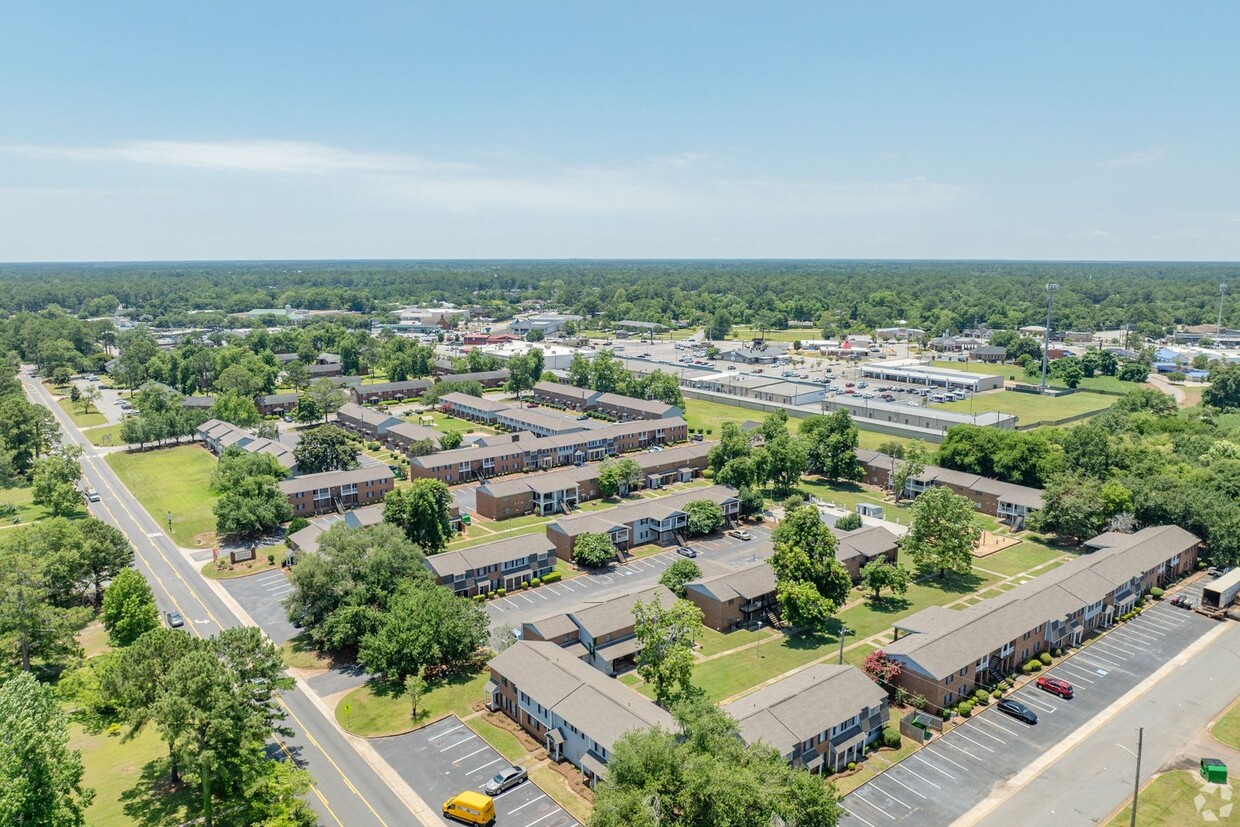AFFORDABLE HOUSING FINANCE – What’s Ahead in the last part of 2024
AFFORDABLE HOUSING FINANCE – What’s Ahead in the second half of 2024
Affordable housing developers are starting the new year on a hopeful note after Federal Reserve officials left interest rates unchanged at the end of 2023 while signaling that cuts may still be on the horizon.
That would bring some needed relief to developers who were hit with rising operating and development costs last year, including higher interest rates that made it difficult for many new deals to pencil out.
“We are expecting a moderately better year in remainder 2024 than what we saw in all of 2023,” says Paul Weissman, head of affordable housing production at Lument, a leading commercial real estate lender. “The reality of where interest rates are as well as some potential softness in low-income housing tax credit (LIHTC) pricing will continue to challenge the developer community, but we expect to see an improvement in rates over the course of the year.”
The Federal Reserve held the target federal funds rate at 5.25% to 5.5% in December. However, projections at that time are for rates to settle around 4.6% by the end of this year.
“If interest rates hold steady from recent drops or go even lower, developers will be better positioned to structure more deals and bring more units to the market,” says Daron Tubian, head of affordable housing investments at Barings.
But, even if interest rates hold firm or even decline in the remainder 2024, new construction projects will still face big hurdles.
“Construction costs still remain high, although we have seen some moderation,” Weissman says. “Interest rates and LIHTC pricing are such that gaps will continue to exist on new construction transactions. A lot of the American Rescue Plan funding has been spent, and, despite legislation across the country to increase other sources of funding, we believe that new construction will continue to be challenging.”
Last year, developers had already put considerable pre-construction dollars into their deals, and there was soft money available. These transactions where developers may have had to leave money in or had large deferred fees still got done to prevent the loss of the money already in the deals.
“Many of those developers have been more cautious about spending money given the challenges they faced over the last two years,” Weissman says. “That said, we’re still expecting to see a higher ratio of rehab deals over the course of the remainder of 2024 due to the likely availability of more bond volume cap.”
Dual Pressures
Affordable housing will feel the squeeze from both upward and downward pressures in terms of the overall housing market, according to Nick Luettke, associate economist at Moody’s Analytics.
In our data, affordable housing sits at a 2.4% vacancy rate as of the third quarter compared to 5.1% in terms of market-rate apartments,” he explains. “Demand is definitely there from those who are finding it tough to afford rents and looking for alternative options. There’s simply not enough units.” At the same time, the sector is seeing the downstream consequences of having a tough single-family housing market and a number of households staying in the Class A multifamily space.
“That forces downward pressure on those in the median-level group toward the Class B and C units, which then also have a lower vacancy rate,” Luettke says. “Americans are looking for cheaper options across the housing market. It will be interesting to see if that loosens up when single-family housing adjusts or whether the significant levels of construction happening in the broader market-rate units will help ease the middle and bottom of rental prices.”
Second, affordable housing has taken on new discussions in the public sphere. For example, there are voter referendums on how to try to tackle affordable housing and how to prioritize it. “A great thing about affordable housing is not only is there a national LIHTC program, but there are state- and local-level initiatives,” Luettke says. “We’re going to keep an eye on that in the remainder of 2024, including regional differences in how cities and states may tackle the affordable housing issue.” Moody’s is forecasting about 40,500 affordable housing units that qualify for the LIHTC program to be completed this year compared with about 41,200 units in 2023.
Financing Trends
As last year was nearing a close, it was clear that confidence in the economy was growing. A Lument survey of 300 senior multifamily executives found 73% of the respondents forecasting slow growth or better for the next 12 months, while just 25% predicted a mild recession.
The survey also revealed a difference in perspective on the best solutions to increase affordable units between those building exclusively affordable properties and those seeking to include affordable units in a conventional project. Affordable housing executives are focused on solutions that make more projects possible: real estate tax relief (32%), expanding the tax credit program (25%), and zoning changes and waivers (24%). Their conventional counterparts also chose real estate tax relief (29%) but place more value on lower interest rates (27%) because they would help move projects forward.
A number of changes may still be in store for the debt market as well as in the opportunities for developers this year.
“During the peak of interest rates, numerous clients sought to structure deals with more tax credit equity funding upfront,” says Maria Barry, community development banking national executive at Bank of America. “However, with the recent moderation in rates, this trend might not be as prevalent. The long-term stability of affordable housing relies heavily on a robust permanent loan market. There is a continued focus by perm lenders on pro formas having cushions for rising costs in staffing, services, and insurance. Thankfully, there are many strong perm loan options, and it is important for those to continue.”
Not being able to close financing gaps, too many delays, and cost overruns are among the threats that developers will likely face, according to Barry. However, more deals get done when “clients proactively seek creative solutions to close budget gaps and get us involved early in the process,” she says.
“We share the common goal of finding ways to help speed up the process,” Barry says. “Developers should be prepared to invest in partnerships and be ready to acquire land or property when opportunities arise.”
In addition to delivering construction loans and LIHTC equity to finance affordable housing, Bank of America will also be looking for ways to help clients with efficiencies that support their group through treasury and advisory solutions.
In addition, it’s working on initiatives to expand the developer pool and preserve housing. For example, Bank of America, in partnership with Enterprise Community Partners, is investing $60 million to increase access to capital for BIPOC developers. It also worked with Enterprise to create a $150 million middle-income affordable housing fund to preserve more than 3,000 middle-income units.
Lument’s Weissman also expects more time and effort being spent on middle-income deals “given legislation allowing for real estate tax exemptions and the large number of market-rate projects that are effectively shovel-ready but have no readily available source of construction funding.” Agency forward production and below-market rents should help provide construction lenders with comfort on these transactions, according to Weissman.
Barings’ Tubian also cites middle-income housing as a trend to watch. “2023 demonstrated a sharp increase in both affordable and conventional multifamily developers to increase their pipeline with opportunities for workforce housing,” he says. “I expect this trend to continue in 2024.” This is likely not a time when many large portfolios will be getting refinancing, not with traditional debt at least, notes Reymundo Ocañas, executive vice president and managing director of community development banking at PNC.
“What we’re seeing is an opportunity for equity funds to be more involved in preservation opportunities,” he says. “I see more mission-driven equity funds that want to take rental stock, usually expiring LIHTC properties, and keep it affordable before they can be purchased on the private market. There’s more preservation activity than I’ve seen before.”
The threat to developers will be “the duration of high costs for materials and labor along with interest rates,” according to Ocañas.
In addition, there are opportunities to marry dollars from the Greenhouse Gas Reduction Fund with affordable housing. Further down the road, developers may be able to position projects for bank investment and loans under new Community Reinvestment Act (CRA) rules.
Ocañas says no big changes in strategy are anticipated in PNC’s affordable housing work. However, an area of interest will be Community Development Financial Institutions (CDFIs) that are in the space.
“We will make about $100 million a year in lending and investment to CDFIs,” he says. “This is part of PNC’s $88 billion Community Benefits Plan, which we announced with the BBVA USA acquisition. More and more of the CDFIs that we are dealing with are in the housing space. I think there’s going to be good opportunities there. If we can do more than $100 million, we’re going to do that, but that’s our goal just with CDFIs. Now that CDFIs know more about the $88 billion commitment, I think they’ll look to PNC to invest more.”
An area that Wells Fargo may potentially emphasize a bit more this year is providing direct bond purchase construction-to-perm loans on its balance sheet, according to Vanessa Rodriguez, head of Community Lending and Investment at Wells Fargo. “This is an alternative to our construction-to-agency placement, which remains our core product offering at Wells,” she says. “However construction-to-perm could potentially be another financing solution for certain deals and clients.”
There are challenges across the commercial real estate sector, but affordable housing was a bright spot in 2023 and will continue to be this year, Rodriguez says. “The affordable housing debt market will remain sound, and capital will continue to be available for nonprofits and for-profits across the country to help underserved communities,” she says.
Bond Financing Forecast
Several industry veterans have strong expectations for bond financing in the remainder of 2024.
“If the recent decline in interest rates holds, we think money now parked in money market funds will begin to seek out longer-duration investments as the yield curve elevation and inversion, which has just begun to subside, continues to shift back down,” says Wade Norris, founding partner of Norris George & Ostrow, a law firm specializing in multifamily housing bond financing. “The tax-exempt bond funds are about 25% to 30% of the $400-plus billion annual muni market, and they suffered outflows of about $92 billion in 2022 alone and continuing outflows in 2023, after major inflows in 2019-2021.”
As a result, Norris says a “less-inverted, lower-yield curve may cause the tax-exempt bond fund outflows experienced in 2022-2023 to return to inflows, increasing the buy-side appetite, and, of course, we think that more financings will work at lower rates.”
If the investment appetite for long-term debt, including long-term municipal debt, increases with declining rates, executions that involve public offerings or limited public offerings of tax-exempt debt may become more competitive, according to Norris, noting that he has begun to see this with the Fannie Mae M.TEB structure.
“If the last two years of bond fund outflows return to even modest inflows, we think we may also see some return of the use of high-yield tax-exempt long-term bonds to provide affordable workforce housing, where we saw over $9 billion of volume with the massive bond fund inflows of 2019-2021,” he says. “We do not expect a repeat of the tsunami of these financings that we saw then, but the favorable underwriting criteria in high-growth markets, which increased loan proceeds by more than 25%, is still in place, and this should make some of these financings viable with lower rates and a return of bond fund inflows.”
Rising costs and interest rates have generally reduced private-activity bond volume utilization in the past two years. Norris estimates that 14 to 18 states were oversubscribed in 2021, and that declined to around 10 to 12 states in 2023. “Especially in high-demand states like California and Texas, oversubscription has shrunk substantially,” he says. “The California Municipal Finance Authority, as by far the largest issuer of multifamily rental housing bonds in California, projects that California may actually slip to undersubscribed status in the second round next summer. Oversubscription in a few states, including Oregon and Colorado, has actually increased due to additional state resources becoming available for affordable multifamily rental housing.”
The industry has been extremely resilient given the recent rate volatility, says Allison King, a partner at Tiber Hudson, another leading bond financing law firm. “Overall, we estimate industry volume will be down a little in 2023 but not to the magnitude that we had feared earlier in the year,” she says. “We have been fortunate to work within an amazing industry filled with smart, open-minded, and innovative clients, developers, and industry professionals. Together we have been able to overcome many of the obstacles we have seen [in 2023] and are very optimistic for the second half of 2024.”
Recent interest rate declines made all the difference for deals at the end of 2023, adds Lauren Marcus, partner at Tiber Hudson.
“We are hoping to see that trend continue,” she says. “If it does, we are going to turn our eye to the compression of the spread between taxable and tax-exempt rates. This can take time to trickle through the market, but it will influence the bond structures that may be popular in the second half of 2024.”
As rates rose over the past 18 months or so, the most popular programs were those that allowed developers to lock in their permanent rates as early as possible—often three to six months before the transaction was ready to close—because this took interest rate risk off the table at the time of the rate lock, notes Kent Neumann, founding partner at the firm.
Freddie Mac’s Tax-Exempt Loan product and a few other private-placement programs are popular when rates are on the rise. If the industry begins to feel comfortable that rates are leveling off or dropping, that dynamic may shift.
“Developers may be less eager to lock in rates if they believe rates will fall as they get closer to closing,” Neumann says. “This would open up other financing options that may not have early rate-lock options but rather offer other compelling benefits overall.”
He and others are keeping a close watch on legislation that could reduce the 50% test, which requires that at least 50% of the project needs to be financed with tax-exempt debt to qualify for 4% LIHTCs. A reduction in the rule would impact how deals will be structured, he says, noting that his team is working on debt executions that would be more advantageous if a reduction is approved.
The ability to adjust to market shifts and other changes will continue to be important this year. A question that developers should ask their bond team is “are you willing to be nimble? Are you willing to start down one path and potentially pivot to another if circumstances change if one structure becomes more advantageous than another?” says Marcus.
“Having some ability to keep an open mind on structures and planning for future flexibility can really make a big difference from a deal working or not. As we have seen over the past few years, many developers we have worked with were able to make adjustments, addressing rising rates and other obstacles, to take advantage of opportunities that produced great results. Although the one-size-fits-all approach can sometimes work, the developers that have been most successful are willing to think outside of the box when the situation calls for it.”
Hopes for LIHTC Expansion
Passage of the Affordable Housing Credit Improvement Act (AHCIA) would bring the most significant changes to the industry in 2024.
In January, two key provisions of the bill were included in a bipartisan tax agreement. Following intense congressional negotiations, the agreement calls for a temporary restoration of a 12.5% allocation increase to the LIHTC as well as a temporary reduction of the 50% bond test to 30% for 2024 and 2025. House Ways and Means Committee chair Jason Smith (R-Mo.) and Senate Finance Committee chair Ron Wyden (D-Ore.) announced the bipartisan tax framework Jan. 16. At the end of January, the House of Representatives passed a $78 billion tax bill that includes these measures. It now heads to the Senate. The restoration of a 12.5% increase in 9% LIHTC allocations for 2023 through 2025 and the reduction in the private-activity bond financing threshold to 30% in 2024 and 2025 would finance an additional 202,573 affordable rental homes, estimates Novogradac, an accounting and advisory firm.
If enacted, the proposal would represent the largest increase in affordable rental housing resources since 2000, says Peter Lawrence, director of public policy and government relations at Novogradac. It’s been a long road, but the short version is that advocacy works, says Emily Cadik, CEO of the Affordable Housing Tax Credit Coalition.
Other Issues on the Radar
Several leaders also cite CRA reform as a critical issue to monitor.
“We have the final rule, and people are digesting it,” says Wells Fargo’s Rodriguez. “The banks are trying to understand what it means for their performance overall, and community development lending and investing is a huge part of the requirements. The industry has two years to implement so this is something to watch as it could potentially modify behavior, at a minimum incrementally, but perhaps more materially as the regulators have raised the performance standards.”
Bank of America’s Barry lists several other trends for developers in the new year, including a continued focus on sustainable building practices, ways to incorporate resident health-related resources into a development, a focus on ensuring reserves are adequate, and being ready when opportunities come up to acquire property. PNC’s Ocañas adds that he’s curious about recent CEO successions in the nonprofit sector. “LISC and Enterprise Community Partners have new CEOs,” he says. “There are other entities as well. [This year] is going to be their first full year of a new CEO strategy for them. I’ll be watching to see what they come up with.” With a huge need for affordable housing in the country, many will be eager to see what the industry does this year.
Final Thoughts:
Remember, investing in affordable housing requires due diligence and careful consideration. It’s essential to align your investment goals, risk tolerance, and values with the opportunities available in the market. Interested in investing in Affordable Housing ? Do You Need Real Estate Asset Management or even Property Management ? Then rely on those that know the business, We live it and breath it –at SIMM Capital our investment strategy is to seek the best assets that hold the largest opportunities and to improve on management value, while delivering in rent growth year over year which will result in cash out refinance events with high quality returns. We know the business. To see how we can help you click the link and talk with an expert – www.simminc.com




Recent comments